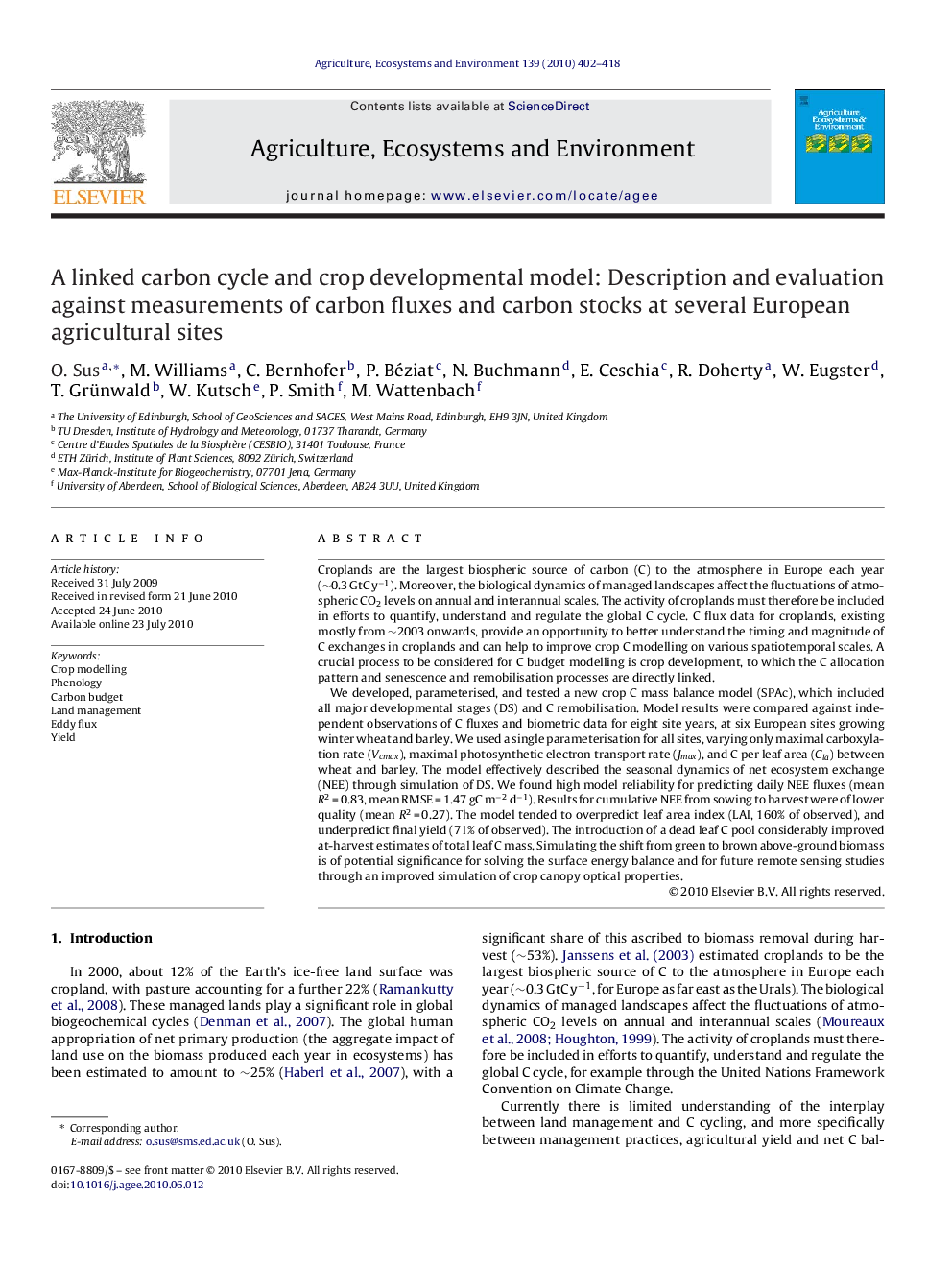| کد مقاله | کد نشریه | سال انتشار | مقاله انگلیسی | نسخه تمام متن |
|---|---|---|---|---|
| 2414860 | 1103934 | 2010 | 17 صفحه PDF | دانلود رایگان |

Croplands are the largest biospheric source of carbon (C) to the atmosphere in Europe each year (∼0.3 GtC y−1). Moreover, the biological dynamics of managed landscapes affect the fluctuations of atmospheric CO2 levels on annual and interannual scales. The activity of croplands must therefore be included in efforts to quantify, understand and regulate the global C cycle. C flux data for croplands, existing mostly from ∼2003 onwards, provide an opportunity to better understand the timing and magnitude of C exchanges in croplands and can help to improve crop C modelling on various spatiotemporal scales. A crucial process to be considered for C budget modelling is crop development, to which the C allocation pattern and senescence and remobilisation processes are directly linked.We developed, parameterised, and tested a new crop C mass balance model (SPAc), which included all major developmental stages (DS) and C remobilisation. Model results were compared against independent observations of C fluxes and biometric data for eight site years, at six European sites growing winter wheat and barley. We used a single parameterisation for all sites, varying only maximal carboxylation rate (Vcmax), maximal photosynthetic electron transport rate (Jmax), and C per leaf area (Cla) between wheat and barley. The model effectively described the seasonal dynamics of net ecosystem exchange (NEE) through simulation of DS. We found high model reliability for predicting daily NEE fluxes (mean R2 = 0.83, mean RMSE = 1.47 gC m−2 d−1). Results for cumulative NEE from sowing to harvest were of lower quality (mean R2 = 0.27). The model tended to overpredict leaf area index (LAI, 160% of observed), and underpredict final yield (71% of observed). The introduction of a dead leaf C pool considerably improved at-harvest estimates of total leaf C mass. Simulating the shift from green to brown above-ground biomass is of potential significance for solving the surface energy balance and for future remote sensing studies through an improved simulation of crop canopy optical properties.
Research highlights▶ High model accuracy for predicting daily carbon fluxes for 6 cropland sites in Europe (R2 = 0.83). ▶ One single, generic parameterisation for winter wheat and barley used in study. ▶ Model realistically simulates crop development, carbon partitioning and remobilisation. ▶ Results meet constraints of observed carbon fluxes and biomass simultaneously. ▶ Deficiencies in representation of land management, cumulative NEE and final yield.
Journal: Agriculture, Ecosystems & Environment - Volume 139, Issue 3, 15 November 2010, Pages 402–418